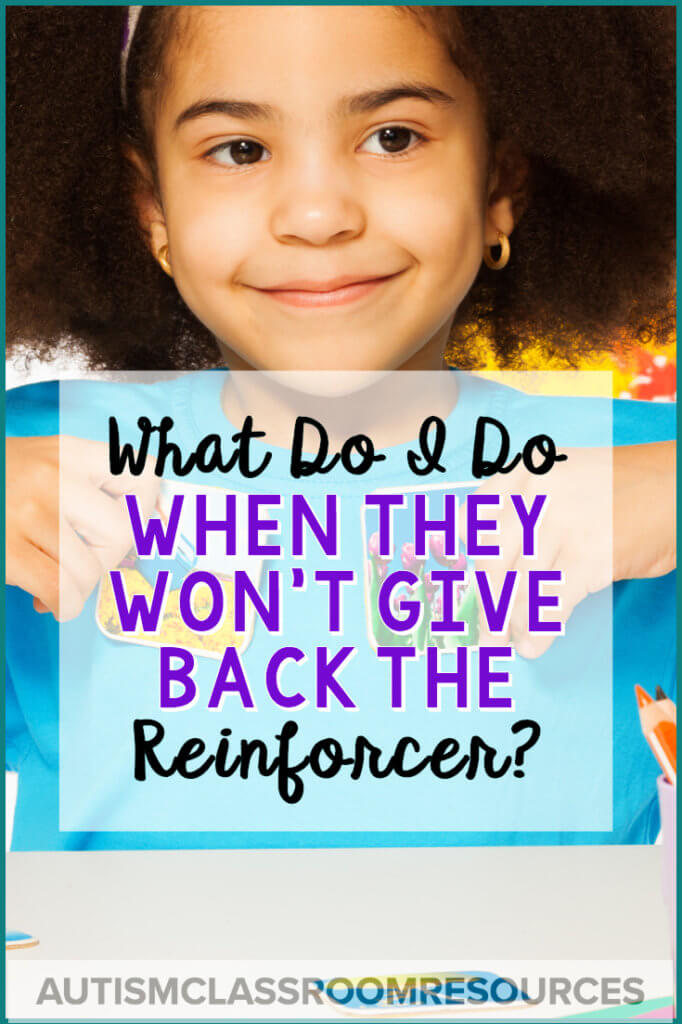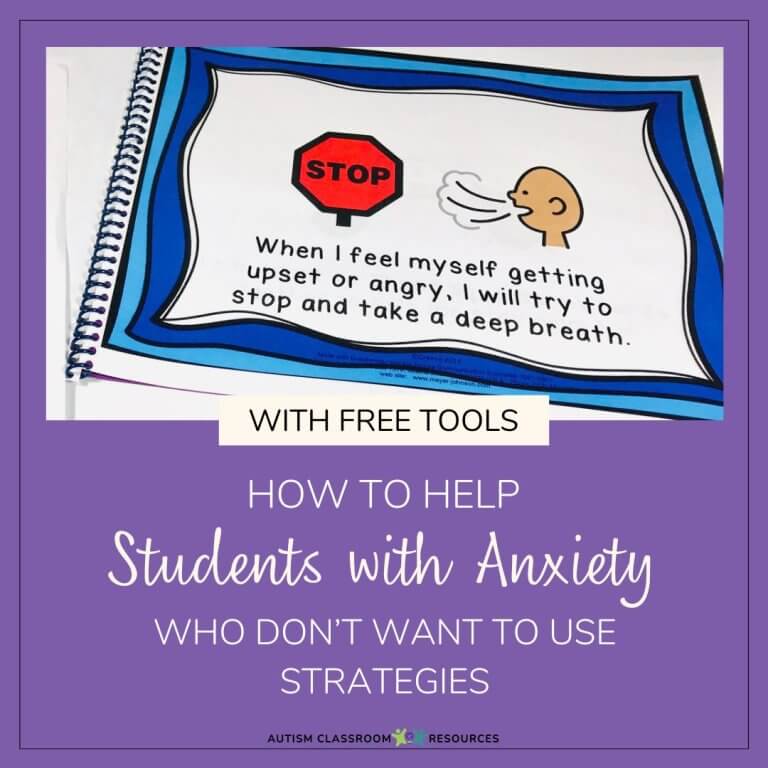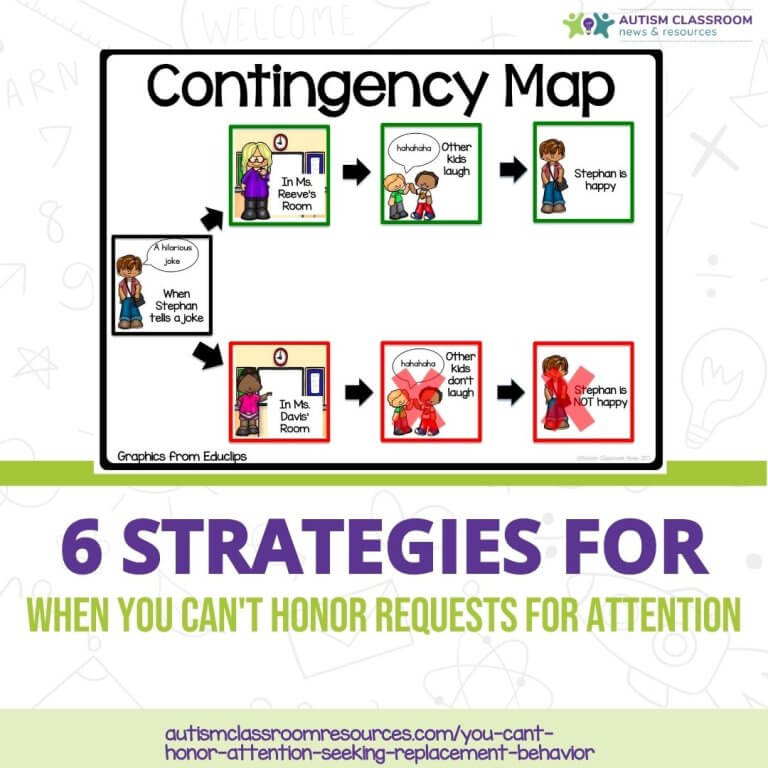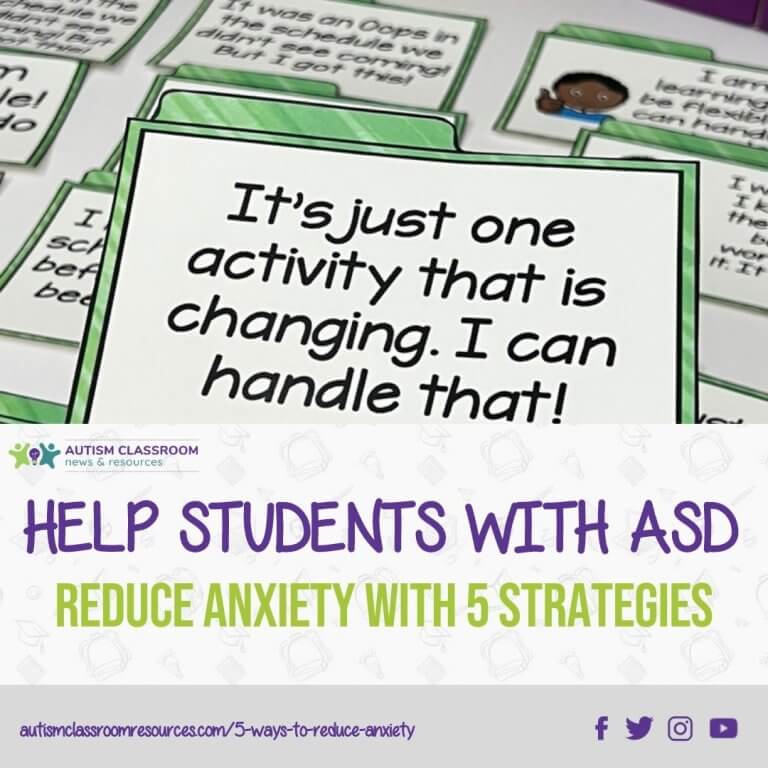Sharing is caring!


Last week I talked about reinforcement and common mistakes we make using it. One of the most frequent questions I get asked is “What do I do when he won’t give back the reinforcer?” This is also one of the most common reasons I see lots of teachers stop using reinforcement.
Sometimes, a student is so engaged and excited about what we are using as a reinforcer that they don’t want to part with it. If we just take it as a behavioral problem, we might be tempted to just avoid the problem. But if this is truly an item or activity that will increase the behavior want to increase, then we miss a big opportunity for student learning if we just give it up.
But, what do you do when they won’t give the reinforcer back? Here are some strategies I’ve used over the years that work for me.
1. Make sure it’s really reinforcing
First, remember the basic mechanics of reinforcement that I talked about in the last post. Something is only a reinforcer if the behavior it follows increases. So, the first step is to make sure that the item or activity really reinforces the skill or behavior. Does the skill or behavior really increase when this item/activity follows it?
If the answer is yes, it’s a great reinforcer, then we have to brainstorm ways to make it easier to use during our instruction.
If the answer is no, then we can put it aside and find something that is. And sometimes things are just too overwhelmingly exciting to actually help behavior increase. That’s not unusual. So before we go through lots of steps to make it work, let’s make sure it’s worth it.
2. Is there a way to make the reinforcer controllable by you?
What I mean by this is that you can give it in small doses. For instance, food is great in part because you can give it in small amounts and then it’s gone (in most cases). I’ve been known to break M&Ms up into 4 or 5 pieces with a pill cutter because it takes FOREVER for a kid to eat a whole one!
Obviously in the case of food, we don’t have to worry about it being given back (I hope!). But if you are using something like bubbles….don’t give the wand to the student. You blow the bubbles and control the wand. Then you can give the reinforcer in short bursts.
Music is another one I use a lot for older students. I control the CD or iPod and play it for a short time and then stop it. Yes, you will have to fight through some aggravation on the part of the student, but that all plays into learning to give things back.
3. Try asking for a turn
I know this sounds lame, but sometimes students will give things back when you hold out your hand and say, “My turn.” I don’t know if it’s previous learning or if “My turn” has more magical powers than “all done” but it definitely works more often.
4. Use a timer
Using a timer is a good way to help students see how long they will have access to an item. Sometimes just knowing the time and hearing the timer go off is enough for them to give it up.

5. Teach the student to give it up
Then, if none of those steps apply or work, we need to teach the student to give up the reinforcer. And it becomes a skill in itself that you have to teach. But think about it…it’s a critical skill for them for learning and in life. Until they get this step, you might also use other reinforcers that you control like bubbles and windup toys or music. Or use ones they consume like food.
Then at the same time I work with the student by giving him his reinforcer for a longer period of time. I mean like 2 to 3 minutes to start. It has to be enough to be powerful for the student and not make him give up.
Then when that time is up, I say “my turn” and and putting out my hand. Assuming he doesn’t give it back, I take it from them (and may get some behavior challenges or frustration during this). BUT, I only keep it for about 2 seconds and then return it really quickly.
Then we do that until the behavior problems resolve. After the behavior improves and the student starts giving it back more independently, I start lengthening the time of my turn. Most students understand it when they see they will get it back.
Finally, I do all this without another task involved so it isn’t serving as a reinforcer at this time. It is just teaching the student to give something when you say my turn.
It may seem like we are taking time away from instruction, but learning behavioral regulation is one of the most powerful skills we can teach. Learning that we can’t have everything on our own terms is too. And essentially, you are teaching the student to take turns and to wait while also allowing yourself a potential strong reinforcer to improve later skills.
This post came out of discussions in the community of the Special Educator Academy. If you are looking for suggestions for the classroom and peers who understand what you do in your classroom, the Academy might be right for you.
Until next time,







